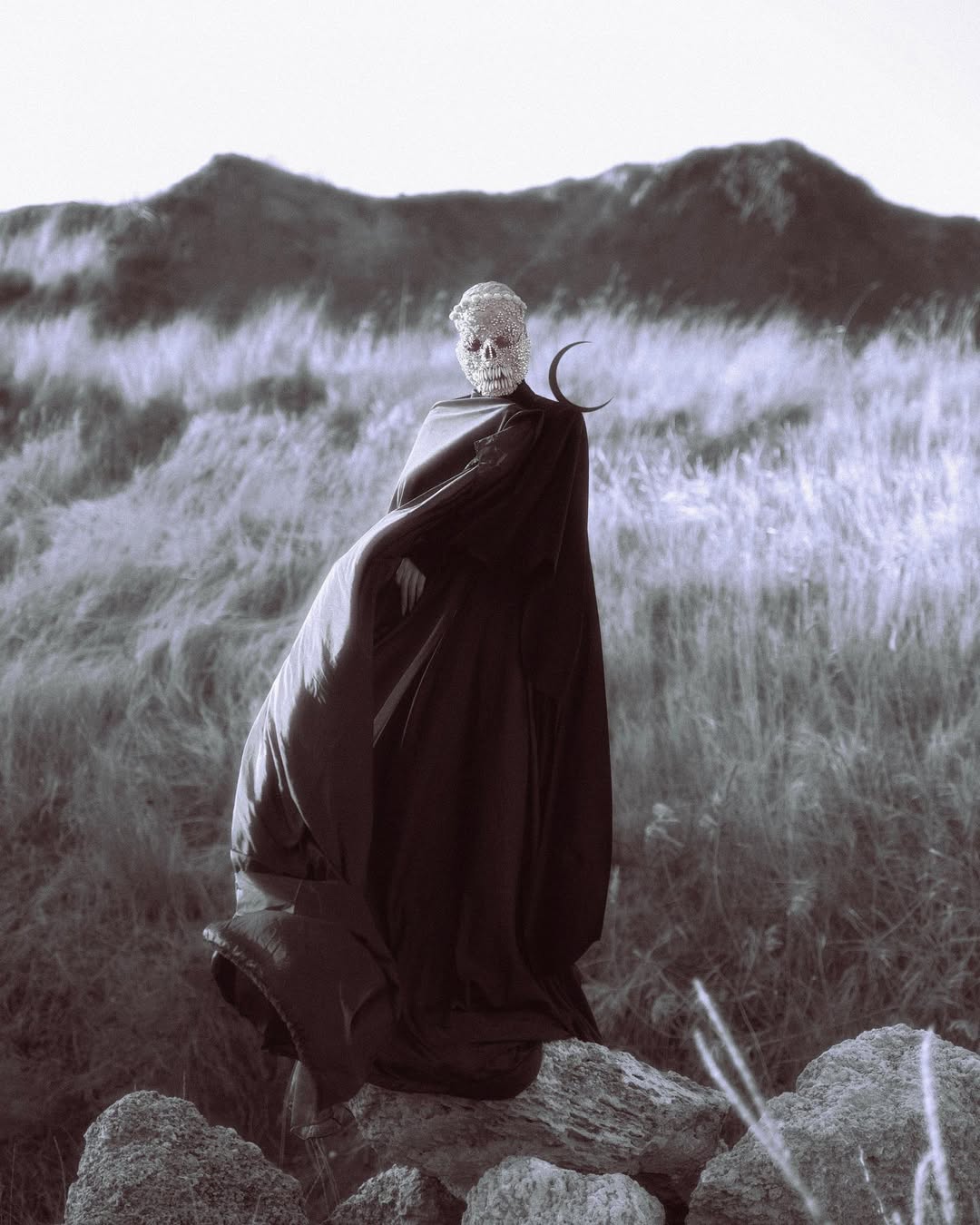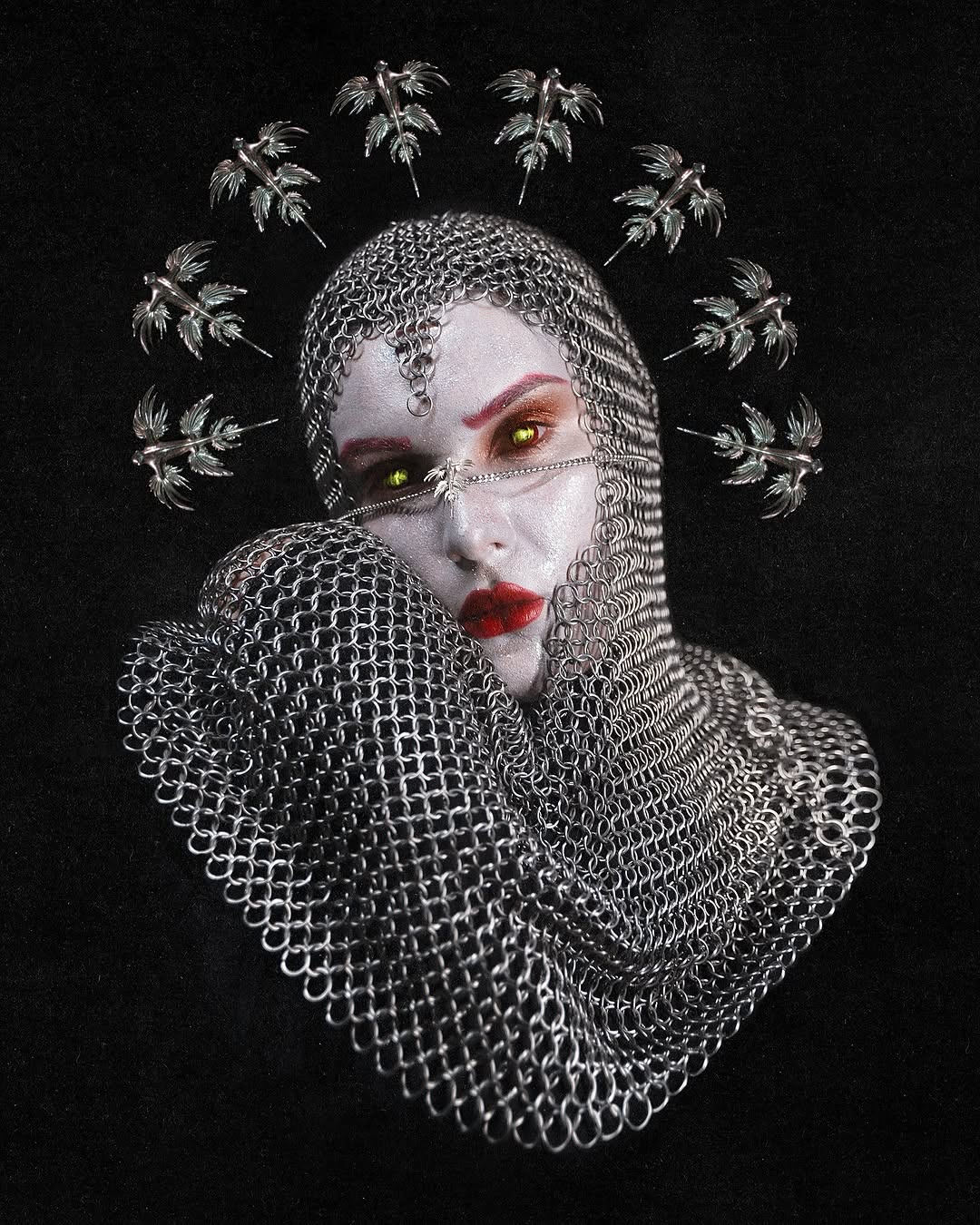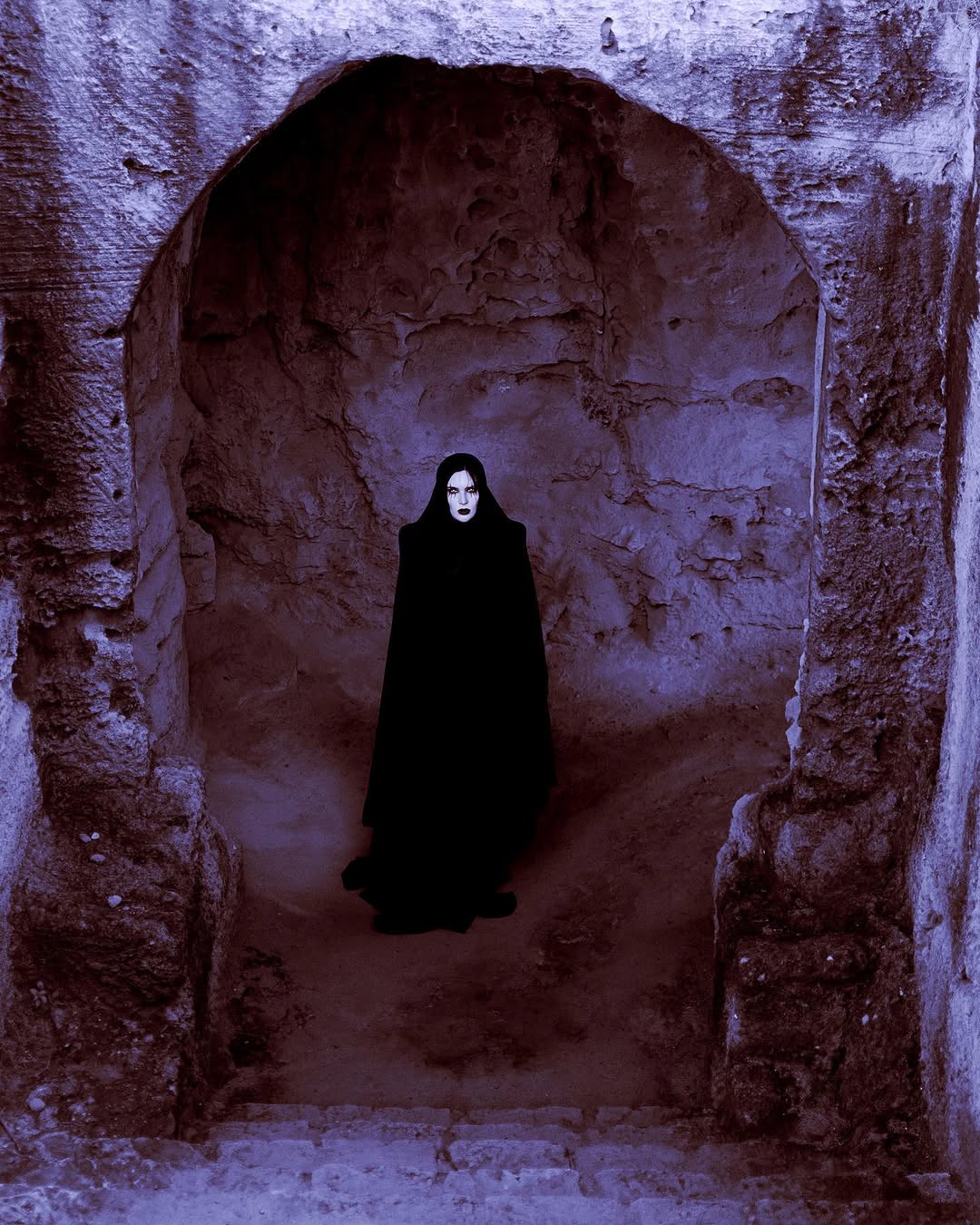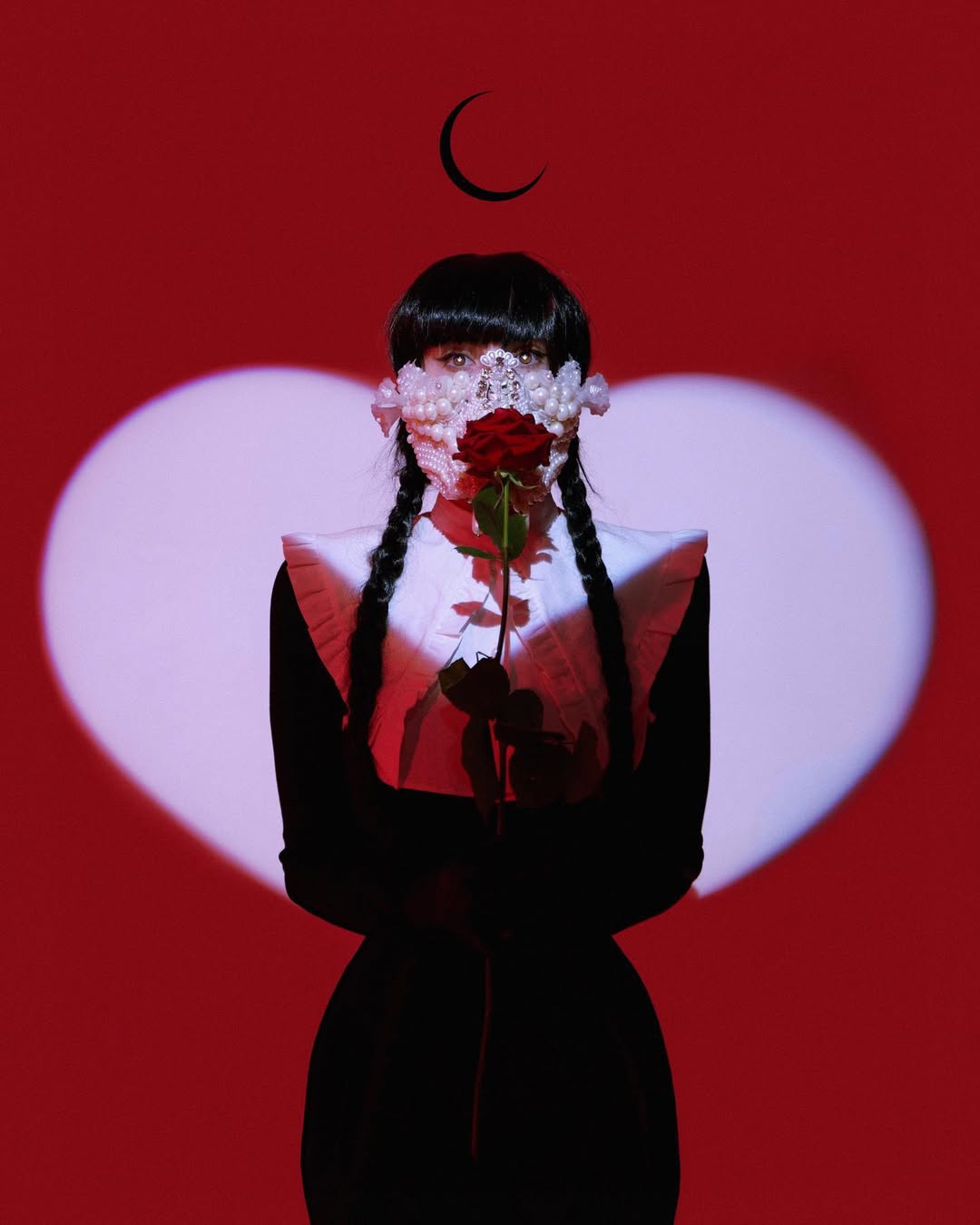b
Naya Kotko
The fashion photography of Naya Kotko is defined by stunning contrast, bold visual impact, and gorgeous, sumptuous dark costumes. Her imagery often features knife-sharp black crescent moons, Renaissance-style swords, long demonic nails, and red or blue backgrounds against which the monochromatic clothing shows up deliciously. Elaborate headdresses as well as both romantically draped and architectural garments form the mysterious and sibylline attire of the subjects of the photographs, whose faces are often obscured by veiling and cloaking. These semi-visageless figures are intensely dramatic, often being preternaturally extended by the extremely long trains of the outfits, while they contort their poetic, nightmarish hands. Some of the images are deceptively simple and take their effect from striking composition. Some appear to be captured in a kind of void, an atmosphere vaguely but theatrically colored, while others are set amidst the brutal and ornate beauty of natural landscapes defined by sea, rock, or cave. The craggy textures of these settings add depth to the images highlighting the severe black of the clothing. Witchy and eerie, Kotko’s photography is stylishly ominous, occupying a perfect space between surreal and elegant.





